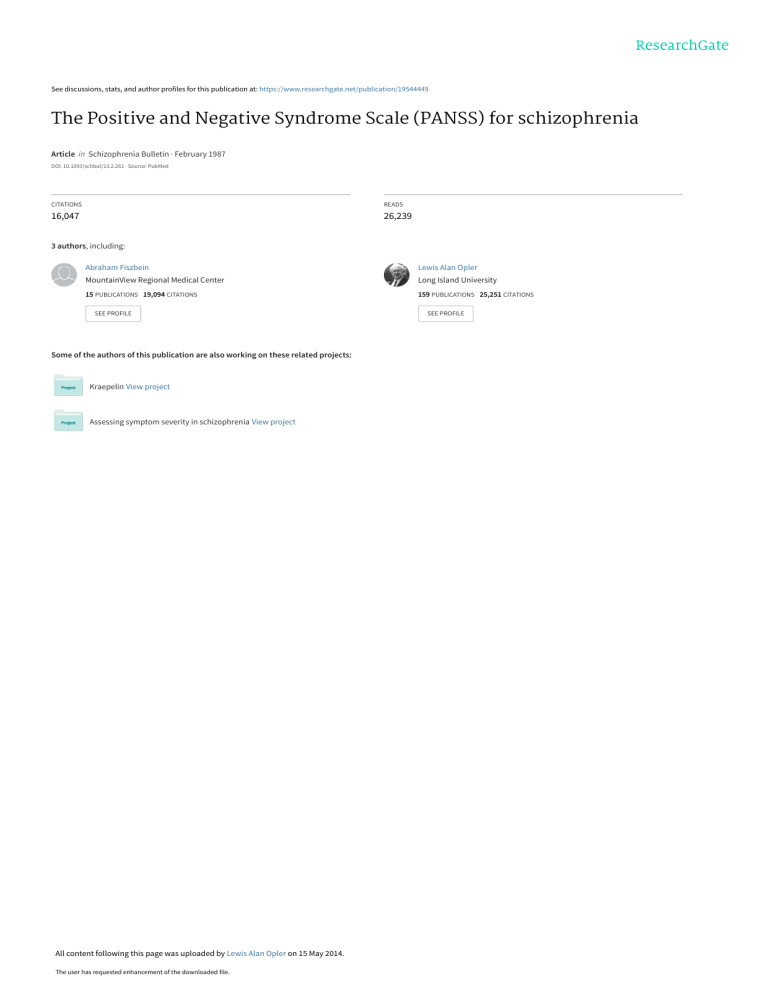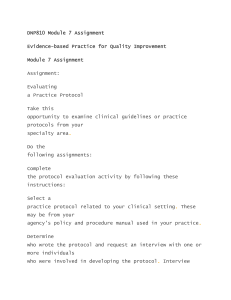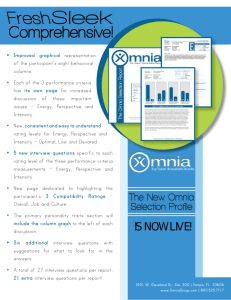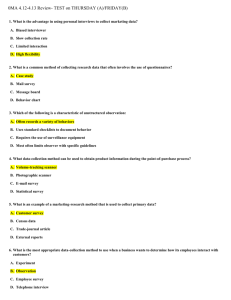
See discussions, stats, and author profiles for this publication at: https://www.researchgate.net/publication/19544449 The Positive and Negative Syndrome Scale (PANSS) for schizophrenia Article in Schizophrenia Bulletin · February 1987 DOI: 10.1093/schbul/13.2.261 · Source: PubMed CITATIONS READS 16,047 26,239 3 authors, including: Abraham Fiszbein Lewis Alan Opler MountainView Regional Medical Center Long Island University 15 PUBLICATIONS 19,094 CITATIONS 159 PUBLICATIONS 25,251 CITATIONS SEE PROFILE Some of the authors of this publication are also working on these related projects: Kraepelin View project Assessing symptom severity in schizophrenia View project All content following this page was uploaded by Lewis Alan Opler on 15 May 2014. The user has requested enhancement of the downloaded file. SEE PROFILE Psychiatric University Hospital Zurich, P.O. Box 68, CH-8029 Zurich, Switzerland 05.05.2004 Psychiatric University Hospital Zurich, Division of Clinical Psychiatry POSITIVE AND NEGATIVE SYNDROME SCALE PANSS S.R. Kay, A. Fiszbein, L.A. Opler STUDY [____] 1-4 GROUP [__] 5-6 PATIENT [___] 7-9 RATING DAY [___] 10-12 [__] 13-14 CARD NUMBER [_] Sex (1=male, 2=female) 15 Birthday (dd.mm.yy) [__:__:__] 16-21 Date of hospitalization (dd.mm.yy) [__:__:__] 22-27 First diagnosis [___.__] 28-32 Second diagnosis [___.__] 33-37 [_] Diagnostic system (1=ICD9, 2=ICD10, 3=DSM3-R, 4=DSM4) [__] Age at onset [_] Course (1=first manifestation, 2=intermittent, 3=progredient, 4=chronic) [___] Duration of Current Episode Prior to Hospitalization (days) Medication Prior to Hospitalization (0=none, 1=antidepr., 2=neuroleptics, 3=other) Current Medication (cf. list of codes) Educational level (1=remedial, 2=junior high, 3=high, 4=college) [_] [___] [_] 38 39-40 41 42-44 45 46-48 49 DATE (dd.mm.yy) [__:__:__] 50-55 INTERVIEWER [___] 56-58 [__] 59-60 HOSPITAL © 2004 Psychiatric University Hospital Zurich, P.O. Box 68, CH-8029 Zurich, Switzerland 0=Absent 1=Minimal 2=Mild 3=Moderate 4=Moderate severe 5=Severe 05.05.2004 6=Extreme 1-12 dupl CARD NUMBER [__] 13-14 POSITIVE SCALE (P) P1 Delusions [_] 15 [_] 16 [_] 17 [_] 18 [_] 19 [_] 20 [_] 21 [_] 22 [_] 23 [_] 24 Beliefs which are unfounded, unrealistic, and idiosyncratic. Basis for rating: Thought content expressed in the interview and its influence on social relations and behavior. P2 Conceptual disorganization Disorganized process of thinking characterized by disruption of goal-directed sequencing, e.g., circumstantiality, tangentiality, loose associations, non sequiturs, gross illogicality, or thought block. Basis for rating: Cognitive-verbal processes observed during the course of interview. P3 Hallucinatory behavior Verbal report or behavior indicating perceptions which are not generated by external stimuli. These may occur in the auditory, visual, olfactory, or somatic realms. Basis for rating: Verbal report and physical manifestations during the course of interview as well as reports of behavior by primary care workers or family. P4 Excitement Hyperactivity as reflected in accelerated motor behavior, heightened responsivity to stimuli, hypervigilance, or excessive mood lability. Basis for rating: Behavioral manifestations during the course of interview as well as reports of behavior by primary care workers or family. P5 Grandiosity Exaggerated self-opinion and unrealistic convictions of superiority, including delusions of extraordinary abilities, wealth, knowledge, fame, power, and moral righteousness. Basis for rating: Thought content expressed in the interview and its influence on behavior. P6 Suspiciousness/persecution Unrealistic and exaggerated ideas of persecution, as reflected in guardedness, a distrustful attitude, suspicious hypervigilance, or frank delusions that others mean one harm. Basis for rating: Thought content expressed in the interview and its influence on behavior. P7 Hostility Verbal and nonverbal expressions of anger and resentment, including sarcasm, passiveaggressive behavior, verbal abuse, and assaultiveness. Basis for rating: Interpersonal behavior observed during the interview and reports by primary care workers or family. NEGATIVE SCALE (N) N1 Blunted affect Diminished emotional responsiveness as characterized by a reduction in facial expression, modulation of feelings, and communicative gestures. Basis for rating: Observation of physical manifestations of affective tone and emotional responsiveness during the course of interview. N2 Emotional withdrawal Lack of interest in, involvement with, and affective commitment to life’s events. Basis for rating: Reports of functioning from primary care workers or family and observation of interpersonal behavior during the course of interview. N3 Poor rapport Lack of interpersonal empathy, openness in conversation, and sense of closeness, interest, or involvement with the interviewer. This is evidenced by interpersonal distancing and reduced verbal and nonverbal communication. Basis for rating: Interpersonal behavior during the course of interview. 2 Psychiatric University Hospital Zurich, P.O. Box 68, CH-8029 Zurich, Switzerland 0=Absent N4 1=Minimal 2=Mild 3=Moderate 4=Moderate severe 5=Severe 05.05.2004 6=Extreme Passive/apathetic social withdrawal [_] 25 [_] 26 [_] 27 [_] 28 [_] 29 [_] 30 [_] 31 [_] 32 [_] 33 [_] 34 [_] 35 Diminished interest and initiative in social interactions due to passivity, apathy, anergy, or avolition. This leads to reduced interpersonal involvements and neglect of daily activities. N5 Difficulty in abstract thinking Impairment in the use of the abstract-symbolic mode of thinking, as evidenced by difficulty in classification, forming generalizations, and proceeding beyond concrete or egocentric thinking in problem-solving tasks. Basis for rating: Responses to questions on similarities and proverb interpretation, and use of concrete vs. abstract mode during the course of interview. N6 Lack of spontaneity and flow of conversation Reduction in the normal flow of communication associated with apathy, avolition, defensiveness, or cognitive deficit. This is manifested by diminished fluidity and productivity of the verbal-interactional process. Basis for rating: Cognitive-verbal processes observed during the course of interview. N7 Stereotyped thinking Decreased fluidity, spontaneity, and flexibility of thinking, as evidenced in rigid, repetitious, or barren thought content. Basis for rating: Cognitive-verbal processes during the course of interview. GENERAL PSYCHOPATHOLOGY SCALE (G) G1 Somatic concern Physical complaints or beliefs about bodily illness or malfunctions. This may range from a vague sense of ill being to clear-cut delusions of catastrophic physical disease. Basic for rating: Thought content expressed in the interview. G2 Anxiety Subjective experience of nervousness, worry, apprehension, or restlessness, ranging from excessive concern about the present or future to feelings of panic. Basis for rating: Verbal report during the course of interview and corresponding physical manifestations. G3 Guilt feelings Sense of remorse or self-blame for real or imagined misdeeds in the past. Basis for rating: Verbal report of guilt feelings during the course of interview and the influence on attitudes and thoughts. G4 Tension Overt physical manifestations of fear, anxiety, and agitation, such as stiffness, tremor, profuse sweating, and restlessness. Basis for rating: Verbal report attesting to anxiety and, thereupon, the severity of physical manifestations of tension observed during the interview. G5 Mannerisms and posturing Unnatural movements or posture as characterized by an awkward, stilted, disorganized, or bizarre appearance. Basis for rating: Observation of physical manifestations during the course of interview as well as reports from primary care workers or family. G6 Depression Feelings of sadness, discouragement, helplessness, and pessimism. Basis for rating: Verbal report of depressed mood during the course of interview and its observed influence on attitude and behavior. G7 Motor retardation Reduction in motor activity as reflected in slowing or lessening of movements and speech, diminished responsiveness to stimuli, and reduced body tone. Basis for rating: manifestations during the course of interview as well as reports by primary care workers or family. 3 Psychiatric University Hospital Zurich, P.O. Box 68, CH-8029 Zurich, Switzerland G8 Uncooperativeness 05.05.2004 [_] 36 [_] 37 [_] 38 [_] 39 [_] 40 [_] 41 [_] 42 [_] 43 [_] 44 [_] 45 [_] 46 Active refusal to comply with the will of significant others, including the interviewer, hospital staff, or family, which may be associated with distrust, defensiveness, stubbornness, negativism, rejection of authority, hostility, or belligerence. Basis for rating: Interpersonal behavior observed during the course of interview as well as reports by primary care workers or family. G9 Unusual thought content Thinking characterized by strange, fantastic, or bizarre ideas, ranging from those which are remote or atypical to those which are distorted, illogical, and patently absurd. Basis for rating: Thought content expressed during the course of interview. G10 Disorientation Lack of awareness of one’s relationship to the milieu, including persons, place, and time, which may be due to confusion or withdrawal. Basis for rating: Responses to interview questions on orientation. G11 Poor attention Failure in focused alertness manifested by poor concentration, distractibility from internal and external stimuli, and difficulty in harnessing, sustaining, or shifting focus to new stimuli. Basis for rating: Manifestations during the course of interview. G12 Lack of judgment and insight Impaired awareness or understanding of one’s own psychiatric condition and life situation. This is evidenced by failure to recognize past or present psychiatric illness or symptoms, denial of need for psychiatric hospitalization or treatment, decisions characterized by poor anticipation of consequences, and unrealistic short-term and long-range planning. Basis for rating: Thought content expressed during the interview. G13 Disturbance of volition Disturbance in the willful initiation, sustenance, and control of one’s thoughts, behavior, movements, and speech. Basis for rating: thought content and behavior manifested in the course of interview. G14 Poor impulse control Disordered regulation and control of action on inner urges, resulting in sudden, unmodulated, arbitrary, or misdirected discharge of tension and emotions without concern about consequences. Basis for rating: Behavior during the course of interview and reported by primary care workers or family. G15 Preoccupation Absorption with internally generated thoughts and feelings and with autistic experiences to the detriment of reality orientation and adaptive behavior. Basis for rating: Interpersonal behavior observed during the course of interview. G16 Active social avoidance Diminished social involvement associated with unwarranted fear, hostility, or distrust. Basis for rating: Reports of social functioning by primary care workers or family. FORMALE DENKSTÖRUNGEN Z1 Verschwommenes Denken Die Begriffe sind unscharf und vage, die Äusserungen sind in grösseren Zusammenhängen nicht verständlich. Ein vager thematischer Zusammenhang bleibt erkennbar, Themenwechsel vollziehen sich durch allmähliches Entgleiten des bisherigen Themas. Typisch finden sich auch Vorbeireden, Kontaminationen, Verschiebungen und Substitutionen sowie Neologismen. Z2 Sprunghaftes Denken Das Denken ist assoziativ gelockert, es treten zahlreiche, den Sinnzusammenhang durchbrechende Gedankensprünge auf, so dass der Eindruck einer bei jedem Einfall wechselnden Denkrichtung entsteht. 4 View publication stats



